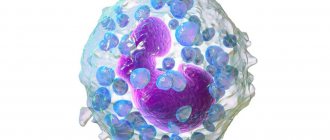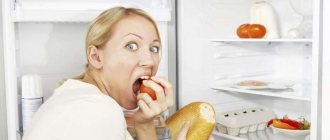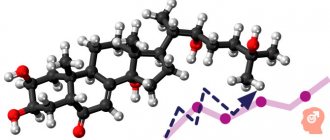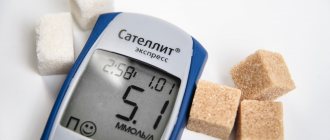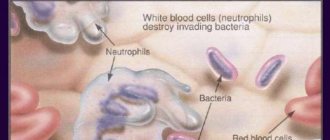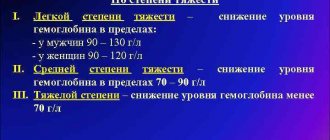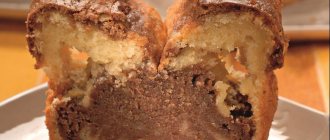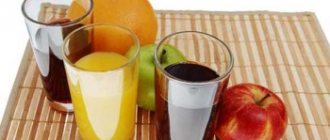Authorized Products
First of all, the diet for iron deficiency anemia should contain an increased amount of proteins, which increase the absorption of iron by the body and are necessary substances for the construction of hemoglobin.
Up to 2/3 of the protein consumed should be of animal origin.
It is important to more often introduce into the patient’s menu foods rich in microelements involved in hematopoiesis (iron, cobalt, zinc, manganese). The listed microelements are found in many cereals, meat products, vegetables and herbs.
Consumption of vitamins (group B, folic and nicotinic acid, vitamin C) should increase by 1.5-2 times. Ascorbic acid helps iron to be absorbed, and the other listed vitamins take part in hematopoiesis. Vitamins are found in large quantities in vegetables, fruits and berries.
Calcium is necessary for the skeletal system; in addition, it regulates the functioning of the cardiovascular system and takes part in blood clotting. You can get calcium from dairy products, but it makes sense to take into account that taking dairy and protein products is incompatible, since calcium makes it difficult to absorb iron.
The list of foods for iron deficiency anemia is quite extensive; almost everything is recommended for the patient, unless there are specific restrictions for taking certain dishes:
- any bread, but preferably bran bread (a source of B vitamins);
- rich broths and soups made from them (contain extractive substances that stimulate appetite);
- lean meats, beef tongue, veal, beef, pork liver (mainly) and beef, kidneys - a source of iron;
- fresh vegetable salads seasoned with vegetable oil are sources of vitamins;
- jellied fish or tongue;
- canned fish, any fish;
- lean poultry;
- cereals, especially buckwheat, barley, oatmeal - a source of iron;
- red and black caviar, any seafood;
- any milk and lactic acid products, including cottage cheese and cheese;
- smoked meats (in the absence of contraindications);
- Any greens in large quantities are a source of folic acid;
- sauces: milk, egg, sour cream, tomato;
- spices in acceptable quantities (they contain many trace elements, moreover, they stimulate the appetite);
- eggs in any form;
- honey - a source of microelements, jam, sugar, any sweets;
- currants, gooseberries, raspberries, strawberries, wild strawberries (lots of vitamin C);
- any fruit, especially apricots and peaches;
- butter and vegetable oils in dishes in moderation (easily digestible fats);
- juices, preferably with pulp, rosehip decoction, weak tea, decoction of wheat and oatmeal;
- any side dishes;
- legumes
Table: iron content in basic foods
| Animal products | Products of plant origin | ||
| Name | Content (mg/100g) | Name | Content (mg/100g) |
| Cheese made from skim milk | 37 | Beans | 72 |
| Pork liver | 29,7 | Hazelnuts | 51 |
| Swiss cheese | 19 | Tahini halva | 50,1 |
| Brewer's yeast | 18 | Cereals | 45 |
| Beef liver | 9 | Fresh mushrooms | 35 |
| Beef kidneys | 7 | Sunflower halva | 33,2 |
| Heart | 6,3 | Millet groats | 31 |
| Yolk | 6 | Poppy | 24 |
| Beef tongue | 5 | Peas | 20 |
| Rabbit (meat) | 4,5 | Sea kale | 16 |
| Turkey meat | 4 | Dried apples | 15 |
| Mutton | 3,1 | Dried pear | 13 |
| Veal | 2,9 | Prunes | 13 |
| Beef | 2,8 | Dried apricots | 12 |
| Chicken meat | 2,5 | Cocoa | 11 |
| Mackerel | 2,5 | Dried apricots | 11 |
| Chicken egg | 2,5 | Rose hip | 11 |
| Carp | 2,2 | Buckwheat | 8 |
| Sausages | 1,9 | Blueberry | 8 |
| Chum salmon caviar | 1,8 | Oatmeal | 6 |
| Sausage | 1,7 | Dried mushrooms | 5,5 |
| Chicken | 1,6 | Almond | 5 |
| Pork | 1,6 | Oatmeal | 4,3 |
| Burbot | 1,4 | Dogwood | 4,1 |
| Pasta | 1,2 | Peach | 4,1 |
| Sea fish | 1,2 | Apricots | 4 |
| Honey | 1,1 | Nectarine | 4 |
| Atlantic herring. | 1 | Wheat groats | 3,9 |
| Breast milk | 0,7 | Wheat flour | 3,3 |
| Cod | 0,6 | Spinach | 3,3 |
| Cottage cheese | 0,4 | Buckwheat flour | 3,2 |
| Egg white | 0,2 | Raisin | 3 |
| Cow's milk | 0,1 | Dried apricots | 2,6 |
| Cream | 0,1 | Apples with red skin | 2,5 |
| Butter | 0,1 | Pear | 2,3 |
| Plum | 2,3 | ||
| Prunes | 2,1 | ||
| Black currant | 2,1 | ||
| Apples are fresh. | 2 | ||
| Cherry plum | 1,9 | ||
| Raspberries | 1,8 | ||
| parsley | 1,8 | ||
| Cherries | 1,8 | ||
| Semolina | 1,6 | ||
| Gooseberry | 1,6 | ||
| Raspberries | 1,6 | ||
| White bread | 1,5 | ||
| Cauliflower | 1,5 | ||
| Cherry | 1,4 | ||
| Beet | 1,4 | ||
| Rice | 1,3 | ||
| Cabbage | 1,2 | ||
| Fried potato | 1,2 | ||
| Carrot | 1,1 | ||
| Melon | 1 | ||
| Corn | 1 | ||
| cucumbers | 0,9 | ||
| Grenades | 0,8 | ||
| Boiled potatoes | 0,8 | ||
| Carrot | 0,8 | ||
| Pumpkin | 0,8 | ||
| Strawberry | 0,7 | ||
| Banana | 0,6 | ||
| Grape | 0,6 | ||
| Cranberry | 0,6 | ||
| Lemon | 0,6 | ||
| Tomatoes | 0,6 | ||
| Rhubarb | 0,6 | ||
| Salad | 0,6 | ||
| Orange | 0,4 | ||
| Cowberry | 0,4 | ||
| Zucchini | 0,4 | ||
| Mandarin | 0,4 | ||
| A pineapple | 0,3 |
Prohibited Products
The list of prohibited foods in the diet for iron deficiency anemia is not so long.
Fats are limited, especially refractory fats that inhibit hematopoiesis, so you should refrain from eating fatty meat, poultry, fish oil, lard, and you should also not include lamb and beef fats in the menu.
Marinades should be excluded: they destroy red blood cells and stimulate the functioning of the gallbladder and pancreas.
It is not recommended to eat cakes and pastries with butter creams, as well as strong tea, coffee and Coca-Cola: these drinks contain caffeine, which interferes with the absorption of iron.
Basic rules of therapeutic nutrition for low hemoglobin
The goal of therapeutic nutrition for anemia is to provide the body with all nutrients, vitamins and microelements, in particular iron, which is necessary to increase hemoglobin levels. This diet increases the body's defenses, restores its functions and improves the patient's quality of life.
The diet for iron deficiency anemia is physiologically complete, its calorie content is high, and the content of proteins, microelements and vitamins is increased. Carbohydrates remain at the standard level, and the fat content is slightly reduced.
According to Pevzner’s classification, the diet for iron deficiency anemia is treatment table No. 11. According to Order No. 330 of the Ministry of Health of the Russian Federation, in medical institutions, nutrition for this disease corresponds to a high protein diet (HPD).
Daily content of nutrients, vitamins and microelements:
- proteins – 120g, of which at least 60% are proteins of animal origin;
- fats – 80-90g, of which 30% vegetable fats;
- carbohydrates – 300-350g;
- vitamin A – 1 mg;
- carotene – 8.5 mg;
- vitamin B1 - 2 mg;
- vitamin B6 – 4 mg;
- nicotinic acid – 30 mg;
- vitamin C – 200 mg;
- sodium - 4g;
- calcium - 1.4g;
- magnesium - 0.6g;
- phosphorus – 2.2g;
- iron - 0.055g.
The energy value of the diet is 3000-3500 kilocalories per day.
Basic principles
- diet; Meals should be fractional: from 4 to 6 times a day. Frequent eating in small quantities stimulates the patient's appetite (and with anemia it is usually weakened), allows maximum absorption of nutrients, vitamins and microelements, and also normalizes the functioning of the digestive tract, which is important if the patient has concomitant diseases. Fractional nutrition allows the body to better perceive dishes and foods that are high in calories.
- treatment of the underlying disease; The main principle of treatment is the identification of disorders in the body that led to anemia and their correction. As is known, iron deficiency anemia is not an independent disease, but only one of the symptoms of a pathology. Therefore, following a diet will be ineffective without treating the underlying disease.
- food temperature; The food temperature should be standard, as in other diets (15-60 degrees Celsius). Too cold or hot food irritates the gastrointestinal tract, which negatively affects digestion and, in particular, the absorption of iron.
- culinary processing; Any culinary processing of products (stewing, steaming, boiling or baking) is allowed, except for frying. When frying, a large amount of fat is used, which is contraindicated in case of anemia; products of their oxidation are formed, which negatively affect the human body as a whole, and especially the digestive tract.
- preparation of dishes and serving; To stimulate the appetite of a patient with iron deficiency anemia, it is important to set the table beautifully and prepare tasty and appetizing-looking dishes.
- alcohol; Alcohol intake in medical nutrition for iron deficiency anemia is excluded. Ethyl alcohol interferes with the absorption of iron and other trace elements and negatively affects the functions of the liver, where hemoglobin is destroyed and bilirubin is synthesized. And since during anemia the body also experiences a lack of hemoglobin, in the presence of an underlying disease this can lead to jaundice.
- salt and liquid; The consumption of free fluid during anemia is within the physiological norm (2-2.5 liters). A decrease in drinking norm leads to blood thickening, which aggravates the hypoxic processes that occur with anemia. Table salt is consumed in a normal amount - 8-12g, and with reduced gastric secretion for the synthesis of hydrochloric acid, the consumption of sodium chloride increases to 15g.
Doctors did not come to a consensus
Representatives of the scientific community do not see eye to eye.
A person who regularly drinks coffee feels invigorated. The drink dilates blood vessels, increasing blood flow to vital organs. Opponents object. Substances contained in coffee slow down metabolic processes. Iron entering the body accumulates in the liver. On a note!
Within 2-3 weeks, the hematopoietic organ ceases to cope with its duties.
In addition to anemia, a person develops liver failure. Symptoms of acute iron deficiency and low hemoglobin:
- hair becomes brittle;
- painful thinness;
- menstrual irregularities;
- decreased attraction to the opposite sex;
- nail plates become fragile;
- chronic fatigue;
- pale skin.


